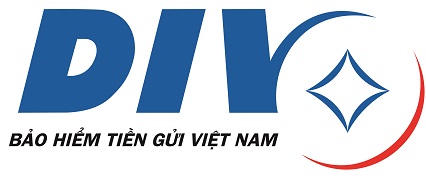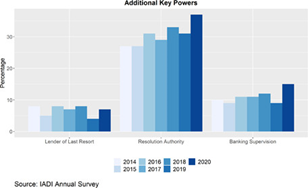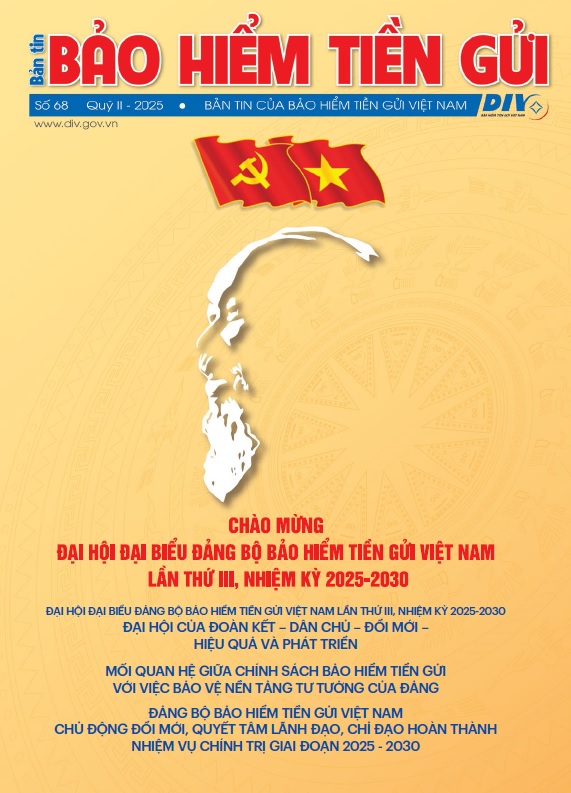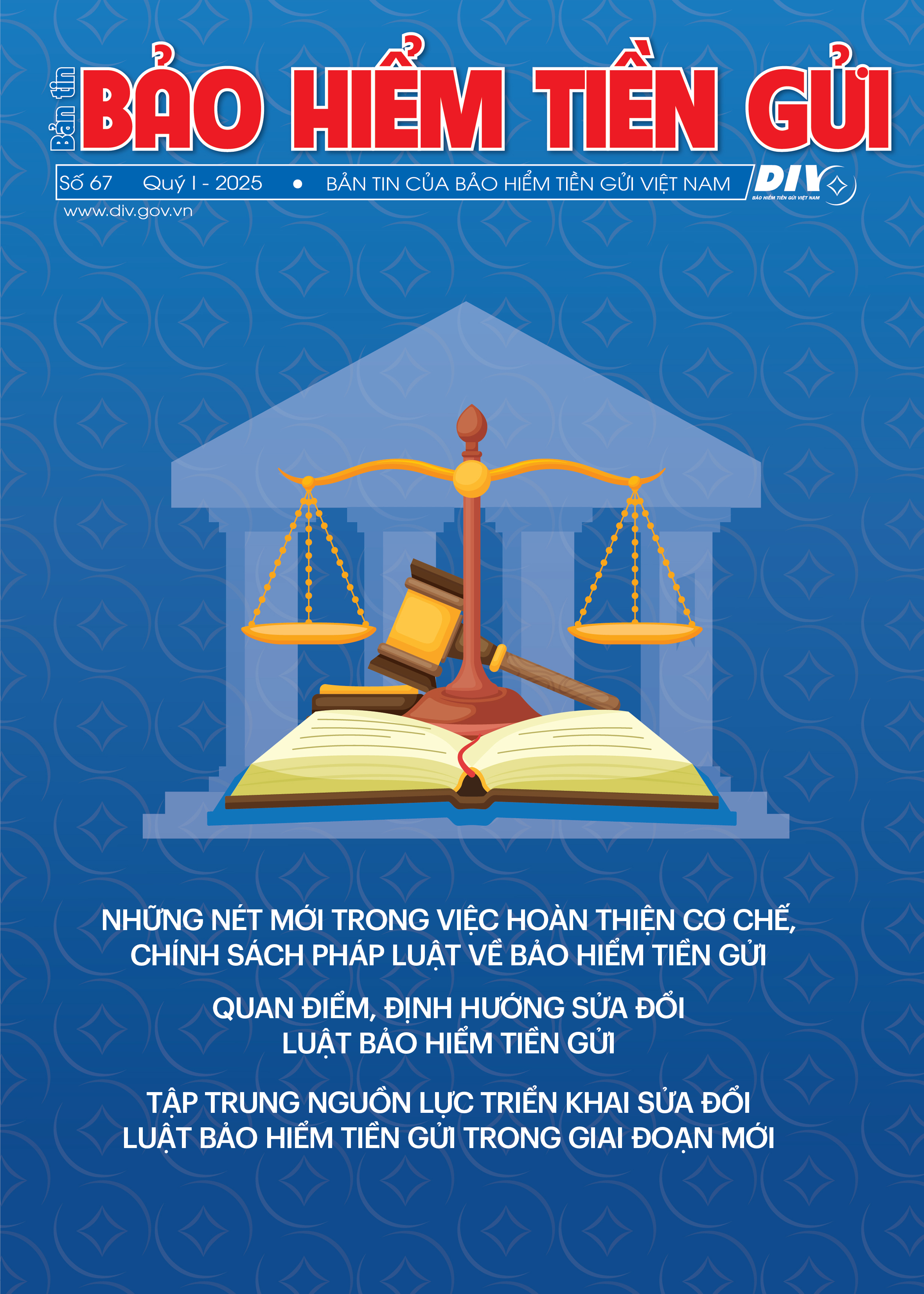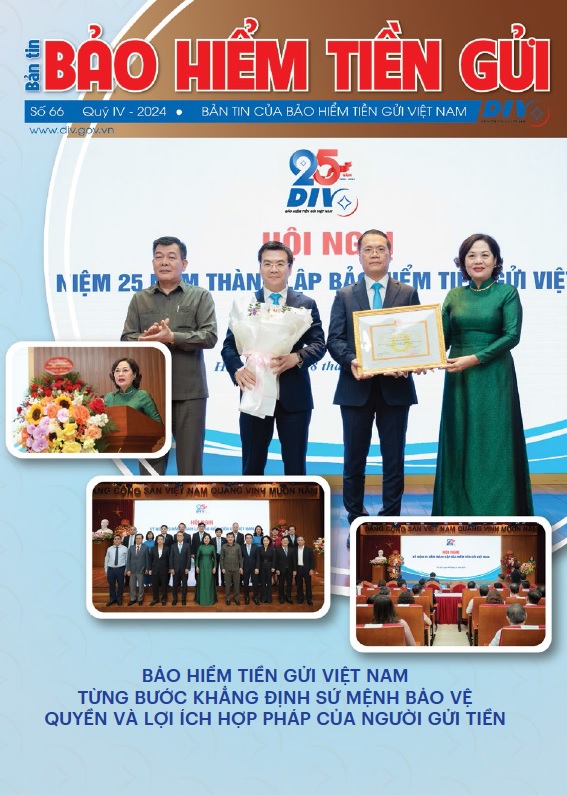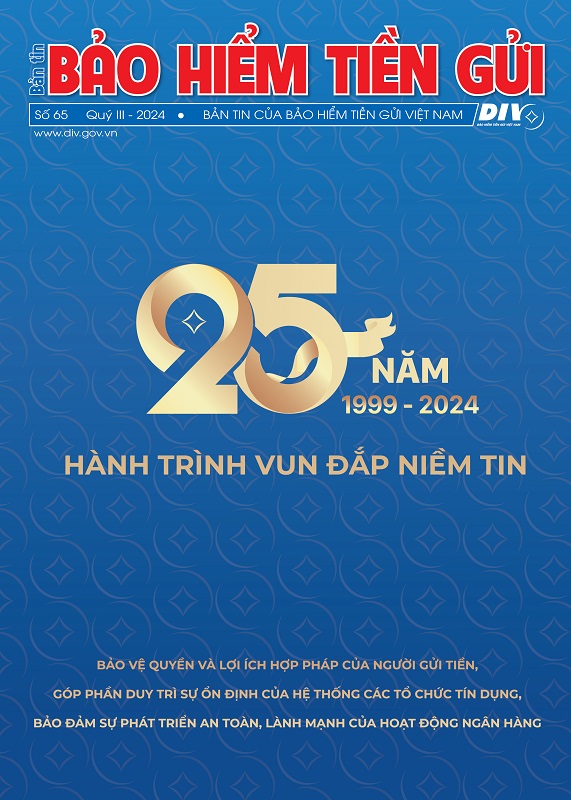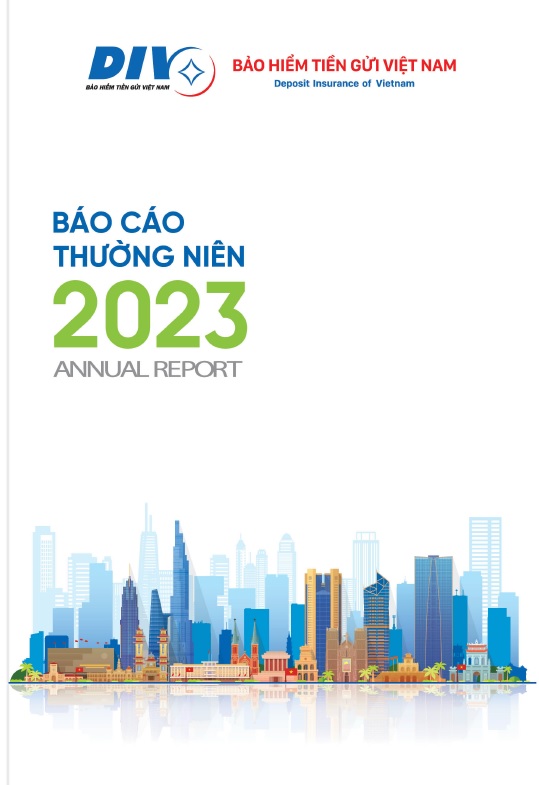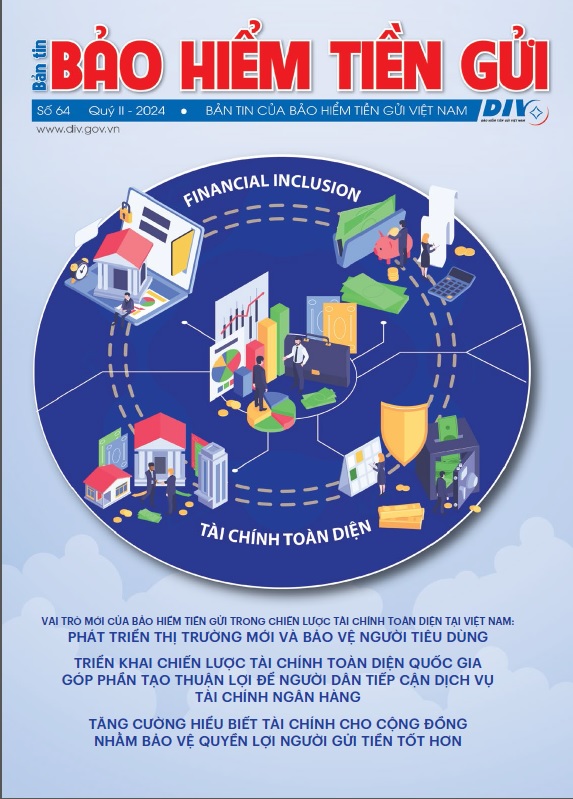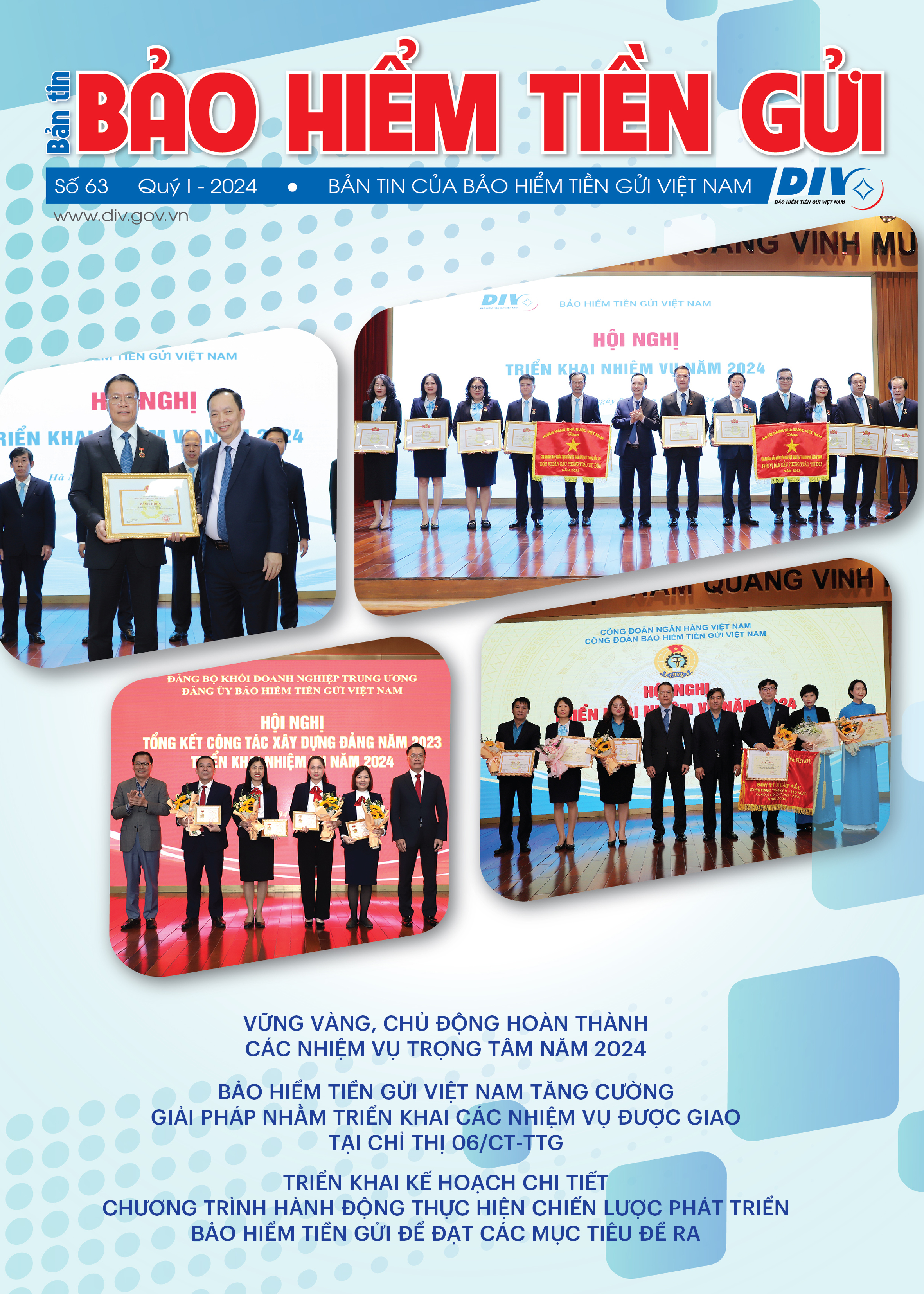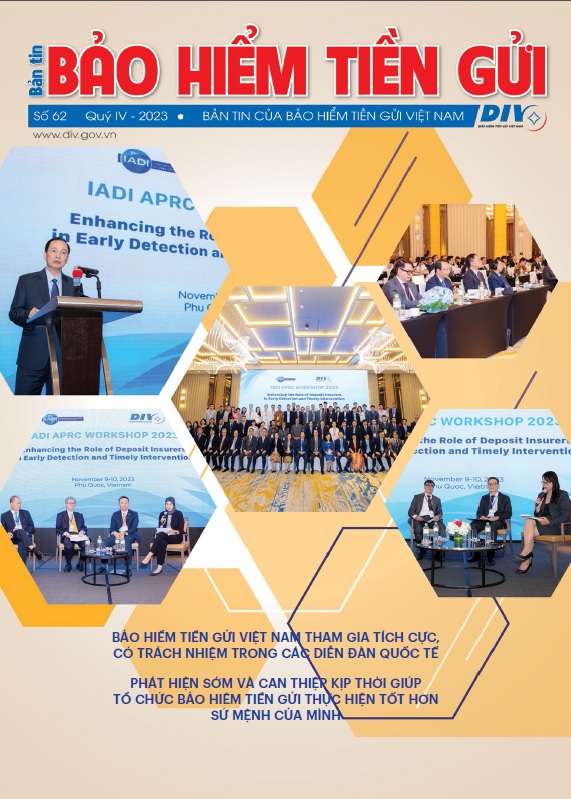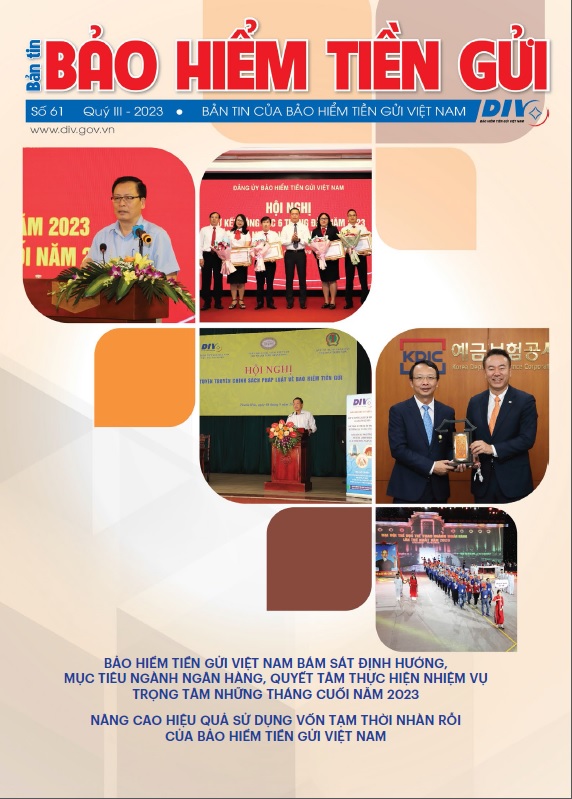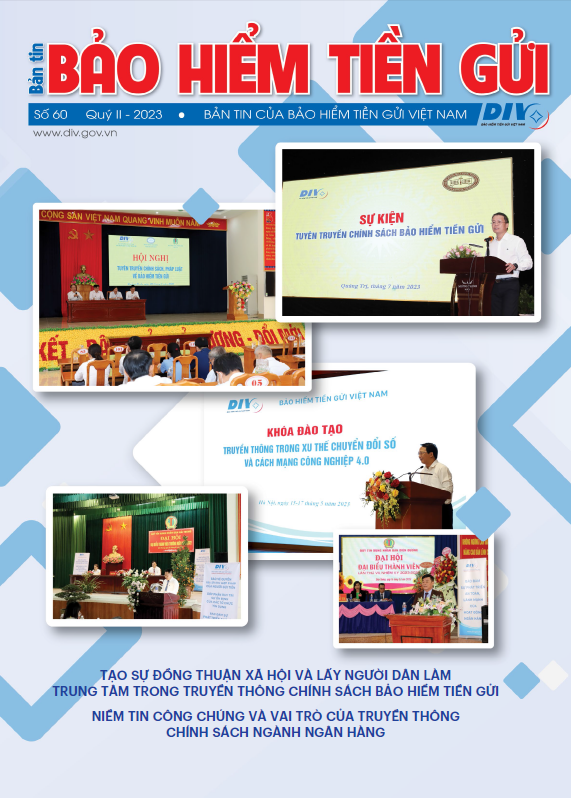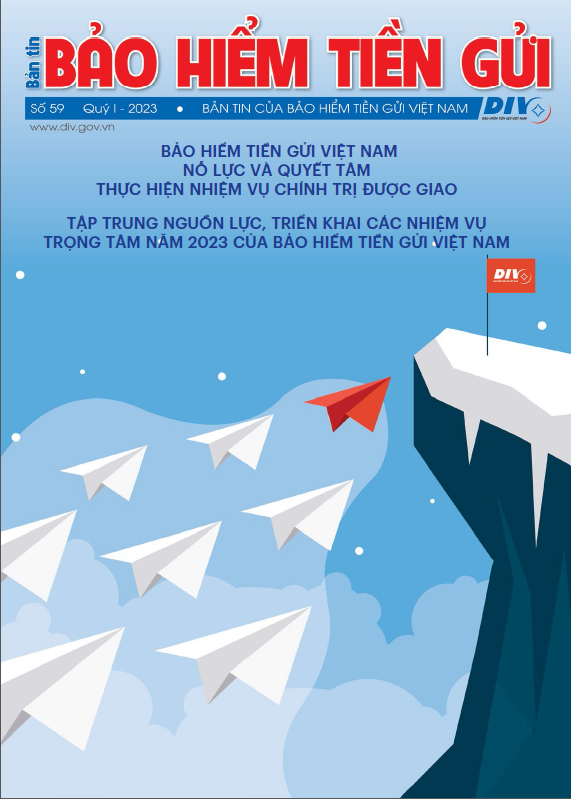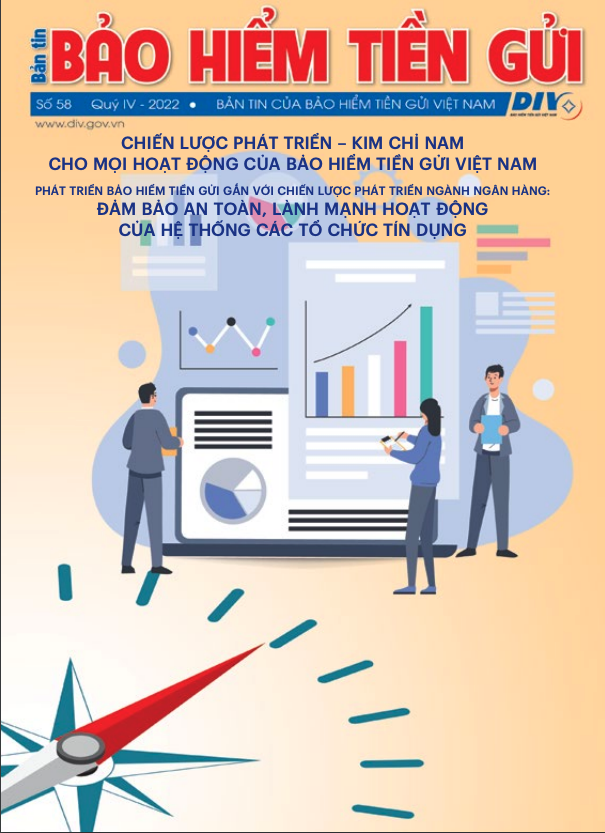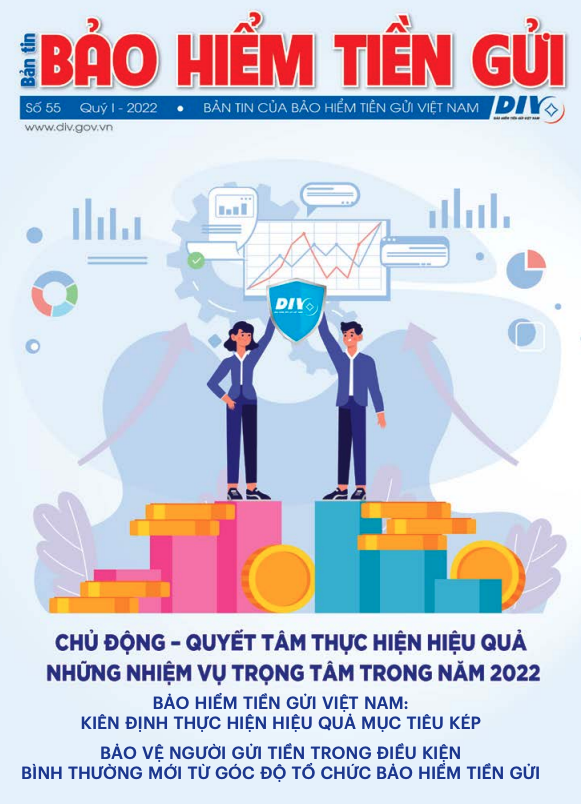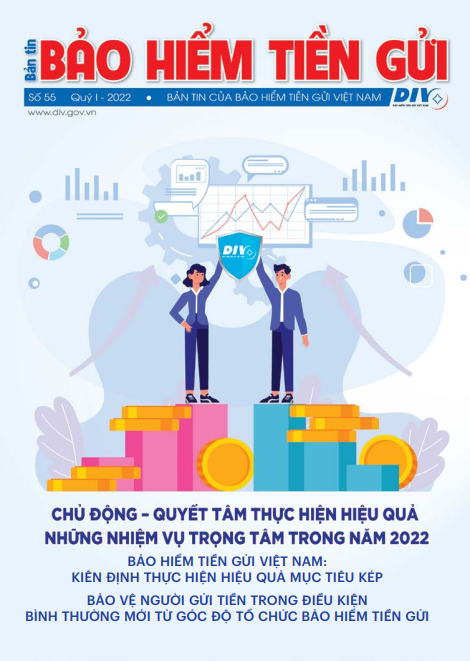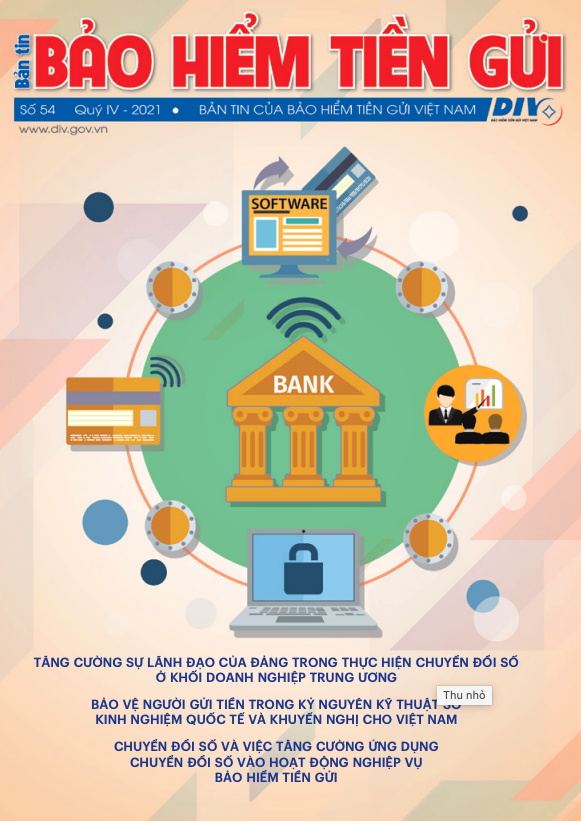Strengthening financial education for depositors is one of the top priorities
According to data from the State Bank of Vietnam (SBV), in the first quarter of 2024, total customer deposits in the entire banking sector increased slightly by 0.7% compared to the end of 2023, in the context of a downward trend in deposit interest rates in the first months of the year. This shows that savings are still a safe option chosen by many people as a stable investment channel. In addition, people have many options to deposit money, such as banks, people's credit funds or microfinance institutions. As the scale of development of the deposit system grows larger, ensuring the safety of their rights, security and avoiding risks for depositors become important issues of concern to policy makers.
According to Decision No.149/QD-TTg of the Prime Minister on approving the National financial inclusion strategy to 2025, with orientation to 2030, one of the five major goals is to promote financial inclusion along with the safety, efficiency and sustainability of the financial system and protect financial consumers. In particular, the deposit insurance is one of the tools prioritized by the Government and the State Bank of Vietnam (SBV). One of the important goals of the DIV is to promote financial education activities and policy dissemination to improve financial literacy, thereby having positive impacts on the protection of the rights and safety of depositors. Specifically, the DIV sets the target that by 2025, 45% and by 2030, 55% of depositors grasping the core contents of the DIV policy respectively.
It can be seen that enhancing education and improving financial literacy for depositors is one of the top important goals of the State to ensure the safety of the deposit system and the rights of depositors. In particular, the target audience of the DIV is depositors in mountainous and rural areas and those who do not have many opportunities and ability to access information on deposit policies. In addition to the target audience, DIV also implements appropriate communication and education methods for each type of depositors in each separate locality depending on the level of awareness and ability to access information in each region. Regionalizing education and improving financial literacy aims to support all Vietnamese citizens to access information on deposits and the rights of depositors in the right way, ensuring the policy of leaving no one behind set forth by the Government. This is also a measure to minimize the number of malicious individuals targeting people in remote areas and those with limited financial knowledge, contributing to building a safe and strong national deposit system.
The role of financial literacy in better protecting depositors' rights
Basically, financial literacy is the ability to use knowledge and skills to manage financial resources effectively, making financial decisions that are appropriate to one's goals and circumstances. Financial literacy is also the ability to understand and apply financial concepts to real-life situations in everyday life (Tran Phuong Thao & Nguyen Thi Kim Loan, 2019). In addition, according to the World Bank, financial literacy is the result of a combination of awareness, knowledge, skills, attitudes and behaviors necessary to make informed financial decisions and ultimately achieve personal financial well-being. In general, the concepts outlined above all emphasize the importance of knowledge and skills in managing personal finance, the ability to make appropriate financial decisions to achieve goals or profits.
Theoretically, financial literacy can be divided into:
(1) Financial knowledfe: basic knowledge of financial concepts such as interest rates, inflation, risks, etc.; knowledge of financial products such as credit, savings, investment, insurance, etc. and knowledge of financial regulations and policies.
(2) Financial skills: skills that help depositors make effective decisions and actions such as budgeting skills, spending and income management; investment and financial planning skills; skills in using financial products and skills in searching, analyzing and using financial information.
(3) Financial attitudes and behaviors: attitudes towards saving and effective spending management; long-term investment behavior and investment diversification; proactive attitudes towards learning and improving financial knowledge; budgeting and financial planning behavior for long-term goals.
(4) Accessibility to products and services: the ability of depositors to access information and use financial products and services at formal banking and financial channels and the availability of financial products that suit user needs.
The above factors play an important role in forming comprehensive financial knowledge, helping people to effectively manage their personal finance, make the right financial decisions and achieve their financial goals. In particular, financial knowledge and financial skills are the fundamental factors that create financial knowledge for each individual, which determines the actions and decision-making ability of participants in the financial system. In addition, financial attitudes and behaviors as well as the ability to access products and services can be considered "soft" factors, which combine with financial knowledge and financial skills to help participants in financial activities make appropriate decisions depending on their conditions, personal circumstances and the surrounding financial environment. Each factor has an important role, is closely linked to each other, and complements each other to create comprehensive financial knowledge for each person.
Financial literacy plays a key role in protecting the interests of depositors, creating the foundation for a safe and sound financial system:
First, when depositors have financial knowledge, they can recognize and distinguish between formal and informal financial services, thereby avoiding potential risks from black credit services and non-transparent financial activities. In the context of Vietnam's economy, the existence of informal financial services such as black credit poses many risks to depositors. Many people, especially in rural and mountainous areas, still lack information and knowledge to distinguish between safe and unsafe financial services. Financial literacy helps depositors recognize the potential risks from these services, thereby making more informed and safer decisions, contributing to minimizing financial losses and protecting their personal assets.
Second, understanding deposit insurance regulations and policies helps depositors know their rights and responsibilities, ensuring that they can effectively protect their personal assets. For example, understanding deposit insurance limits, insurance payment procedures, and benefits protected by DIV helps depositors feel more secure when depositing money at credit institutions.
Third, financial knowledge also helps depositors make wise financial decisions, manage personal finances more effectively, and build savings and investment plans suitable to their economic conditions. This not only protects their personal interests but also contributes to stabilizing the financial and banking system, minimizing the risk of financial crises due to panic and mass withdrawals.
Finally, financial knowledge also creates the foundation for a smart and responsible financial community, where everyone has the ability to access and use financial services safely and effectively. Therefore, strengthening education and dissemination of financial knowledge not only protects the rights of depositors but also contributes to the sustainable development of the national economy. Thus, through financial education, financial literacy not only directly contributes to increasing the number of adults accessing and using financial products/services, promoting financial inclusion but also indirectly supports the implementation of national goals such as promoting the circulation of investment capital and savings in society, increasing transparency and healthy competition for the financial market, towards sustainable and comprehensive development for each country.
Practices of enhancing financial literacy in protecting depositors’ rights
According to data from the National Credit Information Center of Vietnam (CIC), national credit information has covered more than 48.6 million information subjects, accounting for more than 60% of adults in Vietnam, reflecting a very large proportion of the population that has access to financial services. To achieve these results, the SBV and relevant agencies, especially the DIV, have closely coordinated to implement activities to disseminate knowledge and raise people’s awareness of the financial and banking sector in general and the deposit insurance in particular.
The DIV regularly and widely disseminates basic rights of depositors such as deposit insurance coverage limit, deposit insurance fund, and payment procedures. At the same time, disseminate new regulations on monetary policy and banking activities to advise depositors, helping them not to be swayed by negative information and lack of transparency about banking activities, avoiding mass withdrawals that disrupt the market. In recent years, the DIV has proactively diversified its communication activities, choosing methods suitable for each group of public. Information on deposit insurance policies and news on the financial and banking markets are always conveyed clearly and promptly, helping people have correct and consistent understanding, thereby trusting in the State's policies and confidently depositing money at credit institutions.
According to the plan, the DIV will focus on implementing financial education activities and policy dissemination to the public, aiming to improve understanding of finance, banking and deposit insurance, thereby protecting people and depositors. Specifically, they set the target that by 2025, 45% and by 2030, 55% of depositors will grasp the core contents of the DIV policy, including: protected rights and legitimate interests, scope of insured deposits, coverage limit, and basic information about the DIV organization. In addition, the DIV has improved communication activities through widely distributed mass media, including local and national radio and television stations, newspapers and magazines. To spread awareness of the DIV policy to the public, the DIV has organized seminars, reports and developed skits. In addition, DIV has made efforts to convey information on deposit insurance policies, announcements on hot spots in policies and knowledge about the financial and banking market in a clear and timely manner, ensuring that people have the right understanding and feel secure when depositing money at credit institutions, and are steadfast and confident in the State's sanctions. They have found a suitable approach to depositors in rural and mountainous areas through socio-political organizations, and reached depositors who are members of People's Credit Funds through the annual activities of these organizations.
Although Vietnam has made great strides in improving financial literacy to protect depositors’ rights, there are still many challenges to be addressed. One of the biggest challenges is the uneven level of financial literacy across regions, especially in rural and mountainous areas where people have limited access to financial information and services. In addition, there are disparities in education levels and financial literacy among population groups. The rapid development of financial technology (fintech) and new financial products also poses challenges in ensuring that depositors understand and use them safely. Furthermore, misinformation and increasingly sophisticated forms of financial fraud require authorities to make greater efforts in financial communication and education. The coordination between state management agencies, financial institutions and media units is still not really effective and synchronous, reducing people's ability to access and enjoy financial knowledge.
Some policy recommendations
In the context of an increasingly developing economy, raising people's financial awareness and knowledge has become an urgent task. To achieve this goal, comprehensive and effective solutions are needed to ensure that everyone has the opportunity to access and understand financial concepts and products.
First, actively develop a comprehensive financial education program through developing a framework for financial curricula at all levels. Integrating basic financial knowledge into the curriculum from primary to university helps students grasp financial concepts early, thereby improving financial literacy of the community.
Second, enhance access to financial information in rural and mountainous areas through the application of information and communication technology to develop easy-to-use mobile applications and financial information portals, especially supporting Vietnamese and ethnic minority languages, will help people in these areas easily access information.
Third, strengthen cooperation with local organizations such as the Farmers' Association, the Women's Union and People's Credit Funds to organize seminars and training courses to improve financial literacy in localities.
Fourth, develop technology applications to support financial education is necessary to ensure effective information transmission. Multimedia content such as videos, infographics and easy-to-understand articles on basic financial concepts and new financial products will attract attention and be easily absorbed. In addition, organizing radio and television programs on financial education on popular channels in rural and mountainous areas will help expand the scope of information access.
Fifth, continue to strengthen communication activities on financial products and services so that people have more trust in financial products and services, thereby confidently accessing and limiting the use of informal financial products and services.
Communication Department
